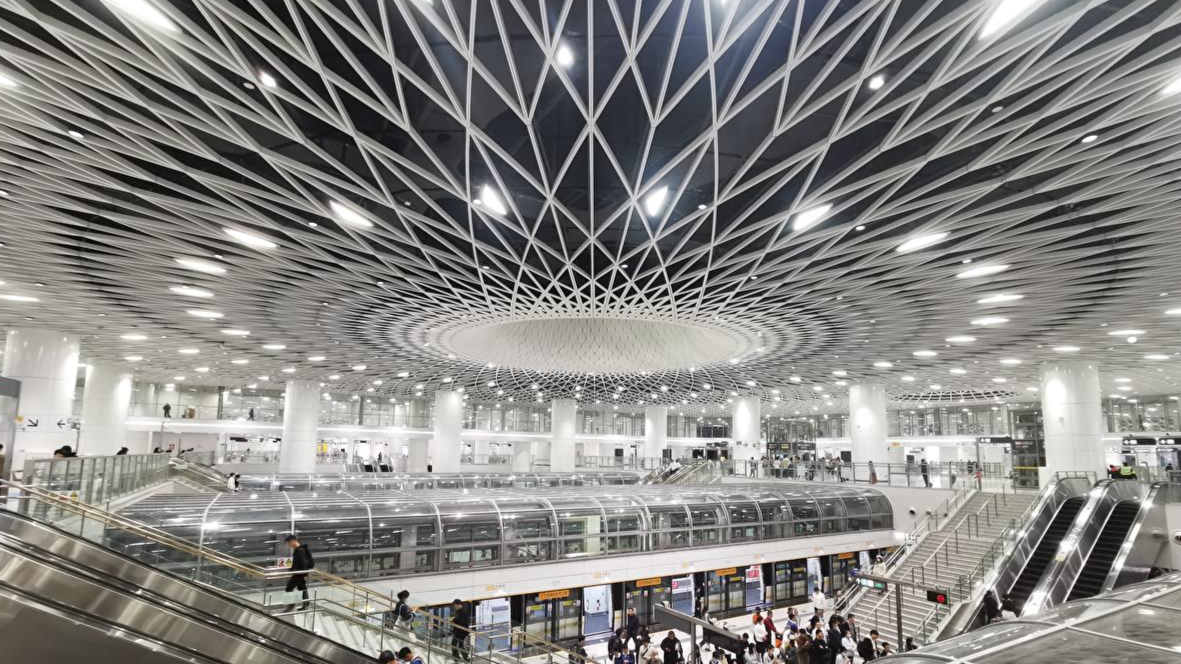
Shenzhen and Hong Kong residents hailed the launch of the southern section of Shenzhen Metro Line 13, saying its opening will further ease cross-boundary travel, as the Hong Kong Special Administrative Region saw 2.19 million cross-boundary trips over the weekend.
The southern section of Shenzhen Metro Line 13, which connects Shenzhen Bay Checkpoint with the city’s Nanshan district, officially came into service on Saturday.
The section runs from Shenzhen Bay Checkpoint station to Gaoxinzhong station, with seven stations spread along 6.36 kilometers.
Its opening comes as a growing number of Hong Kong residents travel to Shenzhen to dine, shop and relax on weekends and holidays.
According to Hong Kong SAR’s immigration department, the city’s 13 main control points recorded 1,095,422 inbound and outbound cross-boundary trips on Saturday and 1,092,135 on Sunday.
ALSO READ: Experts: BRI enters its golden decade
The travelers on Saturday included 126,808 visitors from the Chinese mainland and 375,727 returning Hong Kong residents.
Over 69,000 arrivals were recorded at the Shenzhen Bay Checkpoint, making it the third-busiest crossing point between Shenzhen and Hong Kong following Lo Wu and Lok Ma Chau Spur Line checkpoints, which saw 101,300 and 95,500 arrivals, respectively.
“The opening of the Shenzhen Bay Checkpoint metro line will cut the travel time between my home and the border by half,” said Lu Jing, who commutes between Shenzhen and Hong Kong on weekdays.
Lu works in Hong Kong’s Wan Chai district and lives near Shenzhen’s Houhai station, one of the stations on the new Metro Line 13.
“Previously, I often rode a bike from my home to the border for work, which normally took about 20 minutes. Now, with only two stations by metro, I’m able to arrive at the border within 10 minutes.”
ALSO READ: Shanghai blazes path in growing debut economy
A Hong Kong resident surnamed Wong said the new metro line would encourage her to explore more places in Shenzhen with her friends.
“I learned from lifestyle platform Xiaohongshu that there are many special cafes and restaurants in Nanshan district. I am planning to go there by metro with my friends,” she said.
Transportation between Hong Kong and Shenzhen is becoming more convenient, so is communication between the two cities, she added.


